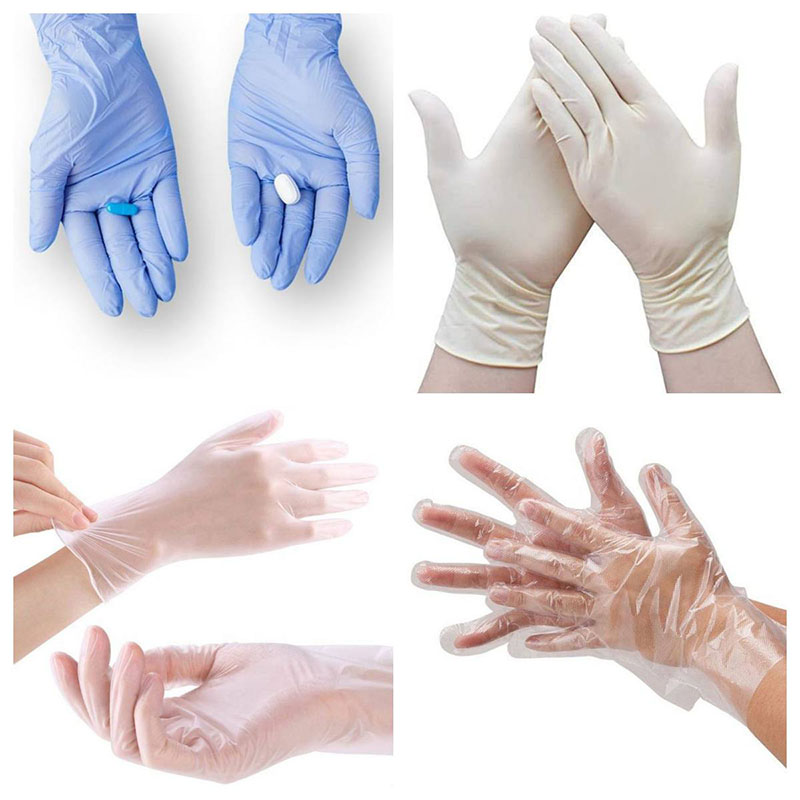Choosing the right disposable gloves is crucial for various tasks, from medical procedures to food handling and general cleaning. The gloves you select should offer the appropriate protection and comfort for your specific needs. In this guide, we’ll walk you through the essential factors to consider when choosing disposable gloves.
1. Purpose Matters:
The first step in selecting the right disposable gloves is to consider their intended purpose. Are you using them for medical procedures, handling food, cleaning, or working with chemicals? Different tasks require different types of gloves, so let’s delve into the specifics.
2. Material Matters:
Disposable gloves are typically made from various materials, including nitrile, latex, vinyl, and polyethylene. Your choice of material should depend on factors such as allergies, sensitivities, and the substances you’ll be handling. Here’s a breakdown of common materials:
- Nitrile Gloves: These are latex-free and offer excellent chemical resistance. Nitrile gloves are a popular choice for medical and laboratory settings.
- Latex Gloves: Latex gloves provide good dexterity and tactile sensitivity. However, some individuals may have latex allergies, so it’s essential to consider this when choosing them.
- Vinyl Gloves: Vinyl gloves are cost-effective and suitable for low-risk tasks. They are not as resistant to chemicals as nitrile gloves but can be adequate for general use.
- Polyethylene Gloves: These gloves are lightweight and inexpensive. They are commonly used in food service but offer minimal protection against chemicals.

3. Size & Fit:
Proper fit is crucial for comfort and effectiveness. Gloves that are too tight can restrict movement and cause discomfort, while gloves that are too loose can lead to accidents. To find the right fit, measure your hand and refer to the glove manufacturer’s sizing chart.
4. Thickness & Durability:
Disposable gloves come in various thicknesses, typically measured in mils (1 mil = 0.001 inches). Thicker gloves offer more durability and better resistance to chemicals, while thinner gloves provide better dexterity. Consider the level of protection needed for your specific task when choosing the thickness.
5. Glove Color:
Believe it or not, glove color can be important. Light-colored gloves, such as white or clear, make it easier to spot contaminants or tears in the gloves. This is especially crucial in food handling and medical environments where hygiene is paramount.

6. Powdered vs. Powder-Free:
In the past, powdered gloves were common, as the powder made them easier to put on and take off. However, powdered gloves have been associated with allergies and contamination issues. For most applications, it’s advisable to choose powder-free gloves, especially in food and medical settings.
7. AQL & Quality Standards:
When selecting disposable gloves, pay attention to quality standards and the Acceptable Quality Level (AQL). A lower AQL indicates a higher level of quality control and reliability in glove manufacturing.
8. Allergies & Sensitivities:
If you or your colleagues have latex allergies or sensitivities, it’s crucial to choose latex-free gloves. Nitrile or vinyl gloves are suitable alternatives.
9. Ambidextrous vs. Hand-Specific:
Disposable gloves come in two types: ambidextrous and hand-specific. Ambidextrous gloves fit either hand, while hand-specific gloves are designed for a specific hand (left or right). Consider your needs and preferences when making this choice.
10. Single-Use or Reusable:
Disposable gloves are designed for single use only. Reusing them can lead to contamination and defeat their purpose. Always dispose of used gloves properly and use a fresh pair when necessary.
11. Eco-Friendly Options:
If you’re environmentally conscious, you can explore disposable gloves made from sustainable materials. Some manufacturers offer eco-friendly options that are biodegradable or made from recycled materials.
12. Storage & Shelf Life:
Proper storage is essential to maintain glove integrity. Store gloves in a cool, dry place, away from direct sunlight or heat sources. Check the manufacturer’s recommendations for shelf life to ensure the gloves remain effective.
13. Proper Donning & Doffing:
Learn the correct technique for putting on (donning) and taking off (doffing) disposable gloves to prevent contamination. Follow industry guidelines and training when applicable.
14. Dispose Responsibly:
Dispose of used gloves in accordance with local regulations and guidelines. Avoid littering and environmental harm by disposing of them properly.
15. Comfort Matters:
Comfortable gloves can make a significant difference in your ability to work efficiently and focus on your task. Don’t compromise on comfort when choosing gloves.
16. Cost vs. Quality:
While cost is a factor, prioritize quality and safety when selecting disposable gloves. Investing in high-quality gloves can help prevent accidents, allergies, and contamination issues.
17. Seek Expert Advice:
If you’re uncertain about which gloves are right for your specific task, don’t hesitate to seek advice from professionals or suppliers with expertise in disposable glove selection.
18. Stay Informed:
Stay updated on industry trends and developments in disposable glove technology. Being informed can help you make informed choices and adapt to new advancements in the field.
In conclusion, choosing the right disposable gloves involves careful consideration of your specific needs, the intended purpose, material preferences, and safety standards. Prioritizing quality, fit, and comfort will help ensure that you select gloves that provide the necessary protection while allowing you to perform your tasks effectively and safely. Hope this blog will help you in choosing the right disposable gloves.
Our disposable gloves made a huge difference during the 2019 -2022 COVID-19 outbreak, providing exceptional protection for countless workers and hopefully helping you in the future as well.


